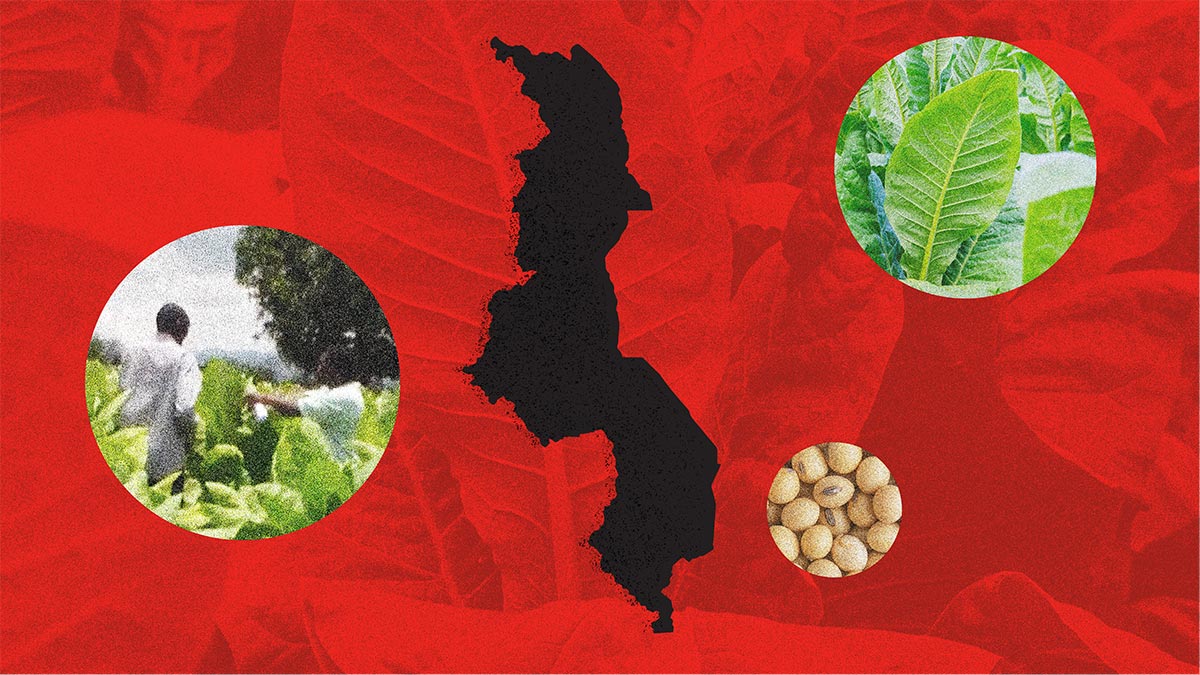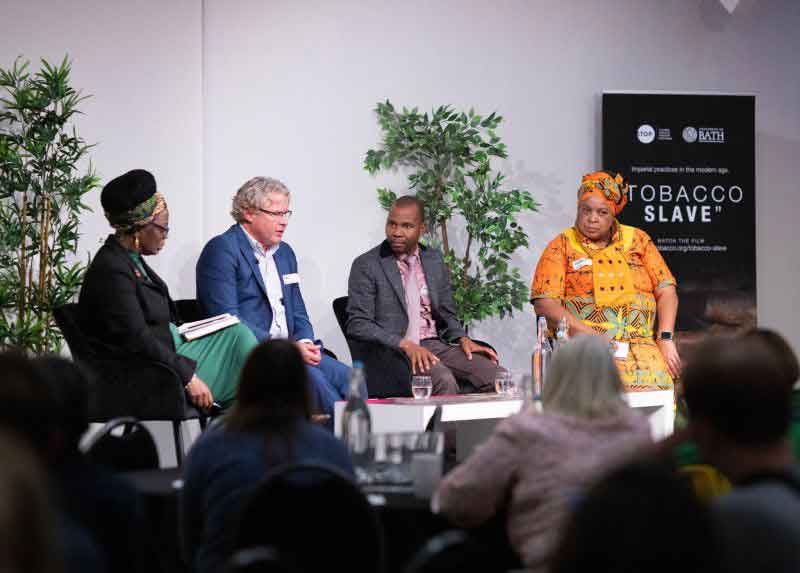- Resources
- News
-
-
Get Email Updates
Sign up for STOP's emails and never miss an update on our latest work and the tobacco industry's activity.
-
Get Funding
Ready to tackle industry interference? You could be eligible for a grant.
-
Share a Tip
Do you have information on tobacco industry misconduct in your country? Let us know.
-
Get Email Updates
Inequity
June 11, 2021

ILO/UNICEF say a “breakthrough” is needed in sub-Saharan Africa. The region is home to a number of tobacco-growing countries.
(New York, June 11, 2021) – STOP is disturbed by the findings of a new report from the International Labour Organisation (ILO) and the United Nations Children’s Fund (UNICEF) that confirm that progress in ending child labor has stagnated. Almost one child in 10 worldwide was engaged in child labor at the beginning of 2020, a 5.5 percent increase from the last estimate. Nearly half of them (79 million) engaged in “hazardous work”—an increase of 6.5 million children (equivalent to 9 percent growth) in this type of work since 2016.
While the report does not provide data on the number of children working in tobacco, the industry likely falls into this “hazardous” category: Children work primarily in tobacco cultivation which is uniquely harmful due to the risk of nicotine poisoning, in addition to health risks from pesticide exposure. They also lose schooling and educational opportunities. Researchers have previously estimated that 1.3 million children work in tobacco fields around the world.
“When we examine child labor in tobacco, the road always leads back to the industry and its maneuvers to pay a pittance to farmers and workers,” said Mary Assunta, Head of Global Research and Advocacy at the Global Center for Good Governance in Tobacco Control, a partner in STOP.
“An ILO event to discuss the report noted that the world has become US $10 trillion richer, while child labor has increased. The tobacco industry has seen its wealth increase at the expense of children and must be held accountable. The industry uses corporate social responsibility and public relations to deflect blame and shift public perception of its complicity to boost its reputation and profits. It must not be allowed to borrow credibility through memberships with United Nations agencies or partnerships with national governments, while children suffer. Change can only come when all parties are willing to stand up to the industry. It’s time to use tobacco control regulations to address this crisis.”
The causes of child labor in the sector are familiar: poverty and the demand for cheap labor, and the lack of well enforced laws to prevent it. Tobacco growing is an integral part of the tobacco supply chain. Common contract farming arrangements can leave growers indebted to tobacco companies—and often impoverished. Previous reports suggest that the use of child labor in the tobacco industry has increased in the last two decades, especially in low- and middle-income countries, with the ILO noting in 2017 that “surveys indicate that child labor is rampant in impoverished tobacco-growing communities.”
Researchers estimate that almost two-thirds of children in Malawi’s tobacco farming families work in the fields. Lawyers for British American Tobacco and Imperial Brands recently pressed the high court in London to dismiss a lawsuit filed on behalf of thousands of Malawi’s poorest tobacco tenant farmers, that alleges the companies’ exploitation of the farmers and their children. The companies’ legal argument was that the farmers could not prove that their tobacco leaf ended up in cigarettes sold by the companies, despite Malawi being a source of tobacco leaf for the companies.
Selective focus on sustainability and child labor
In their sustainability reports, tobacco companies claim to provide “decent work,” in line with the United Nations Sustainable Development Goals. Yet there are accusations that the industry’s promises of economic prosperity drown out the voices of farmers and workers calling for an end to the industry’s exploitative practices that perpetuate child labor.
ECLT promotes itself and its public-private partnerships as part of the solution to tackling child labor in tobacco-growing countries. In reality, it is an association of tobacco companies with an alliance of growers backed by tobacco companies, governed primarily by tobacco executives. According to its last report, 13 of 14 board members in 2019 and ECLT’s funding still came directly from the tobacco industry. After two decades of ECLT’s work, child labor remains entrenched in many tobacco-growing regions where it operates.
There are calls to expel ECLT from the UN Global Compact (UNGC), in line with other UN agencies’ policies, including: ILO’s decision to reject tobacco partnerships; the UNGC’s policies on tobacco companies; the Model Policy for Agencies of the UN System on Preventing Tobacco Industry Interference; and the World Health Organization Framework Convention on Tobacco Control.
A strategy for ending child labor in tobacco
The tobacco industry is a key obstacle in governments’ ability to assist tobacco workers and growers and to eliminate child labor. Under the World Health Organization Framework Convention on Tobacco Control, governments commit to diversify from tobacco to economically viable livelihoods that do not rely on child labor. The treaty recommends sustainably funding diversification programs and increasing tobacco taxes to mobilize domestic resources. Tobacco industry interference is also identified as a barrier to implementation of the treaty, including increasing tobacco taxes.
Notes to editors:
About child labor in tobacco
Child labor happens mainly in the production stage of the tobacco supply chain, from cultivation through to delivery to leaf buyers and/or factories for manufacture. According to the US Department of Labor’s 2020 List of Goods Produced by Child Labor or Forced Labor, the following countries are reported to have child labor in tobacco:
| 1. Argentina | 8. Kyrgyz Republic | 15. Tanzania |
| 2. Bangladesh | 9. Lebanon | 16. Uganda |
| 3. Brazil | 10. Malawi | 17. Vietnam |
| 4. Cambodia | 11. Mexico | 18. Zambia |
| 5. India | 12. Mozambique | 19. Zimbabwe |
| 6 Indonesia | 13. Nicaragua | |
| 7. Kenya | 14. Philippines |
The harms children face from working in tobacco may include:
- Nicotine poisoning with symptoms such as insomnia, dizziness, headaches, dehydration, fatigue, nausea and vomiting caused by absorption of nicotine via the skin during the handling of tobacco (green tobacco sickness).
- Impeded economic and social advancement due to loss of education.
- Serious health harms related to hazardous exposure to chemicals such as pesticides, herbicides, fumigants and growth inhibitors, including respiratory problems, cancer, reproductive health problems, psychological imbalance, immune system dysfunction and neurological damage.
- Long-term musculoskeletal damage due to repetitive strain injuries resulting in chronic pain, arthritis, muscle twitching and bending of bones; caused by constant heavy lifting and strenuous manual labor.
Please contact the STOP press office for more information or to speak to a STOP spokesperson.
About STOP (Stopping Tobacco Organizations and Products)
STOP is a global tobacco industry watchdog whose mission is to expose the tobacco industry strategies and tactics that undermine public health. STOP is funded by Bloomberg Philanthropies and comprised of a partnership between The Tobacco Control Research Group at the University of Bath, The Global Center for Good Governance in Tobacco Control (GGTC), the International Union Against Tuberculosis and Lung Disease (The Union) and Vital Strategies. For more information, visit exposetobacco.org.

